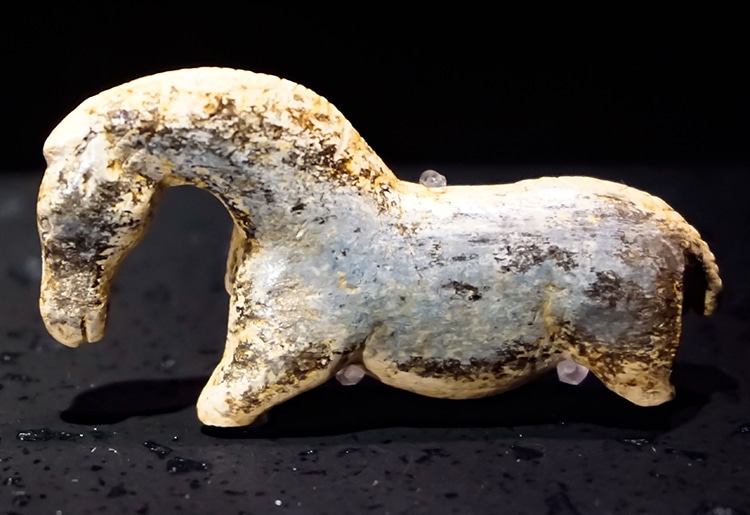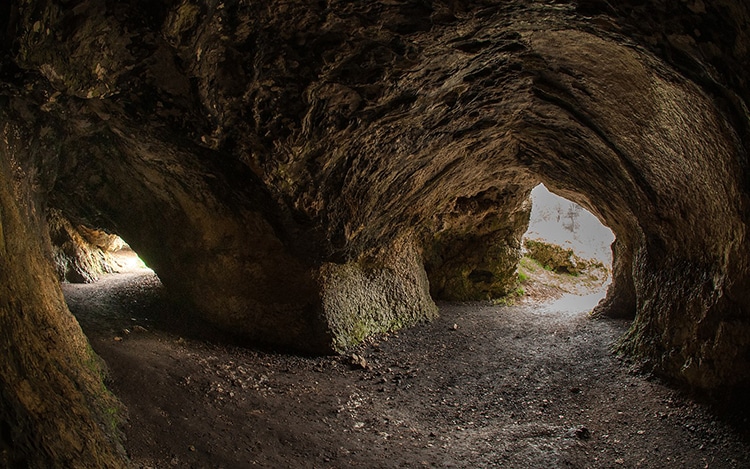A mammoth tusk carved into a wild horse, discovered in Vogelherd Cave.
Ancientwild horsesroamedEurope and Asia, where they were hunted by the earliest humans.
But even older artists depicted horses.

A mammoth tusk carved into a wild horse, discovered in Vogelherd Cave. (Photo: Wuselig viaWikimedia Commons,CC BY-SA 4.0)
The oldest knownsculpture of a horsecreated by modern humans dates back about 32,000 years.
The exquisite statue is carved from the tusk of an ancient mammoth.
It stands only about 1 inch tall and just under 2 inches wide.

The Vogelherd cave, in Germany. (Photo: Thilo Parg viaWikimedia Commons,CC BY-SA 3.0)
The horse’s head is intact, but its four legs have been lost to time and earth.
The indent of its nostrils is still visible, subtly carved.
The mouth, the ears, and the top of the tail are all visible and very lifelike.
The horse was discovered in the Vogelherd Cave in the mountains of southwest Germany.
These caves are now a UNESCO World Heritage site known asCaves and Ice Age Art in the Swabian Jura.
These prehistoric inhabitants left behind cave drawings and figurines.
Carved mammoths, lions, and bison have been discovered.
The details of the figurines include cross markings and other delicate details.
The carvers of these figurines belonged to theAurignacian culture, during the Upper Paleolithic period.
The hunter-gatherers likely used the cave to process theirhunts, especially reindeer and horse.
Bones of hunted animals were discovered, giving clues to what the ancient humans ate.
It was discovered in a cave in Vogelherd, Germany.
The Vogelherd cave, in Germany.